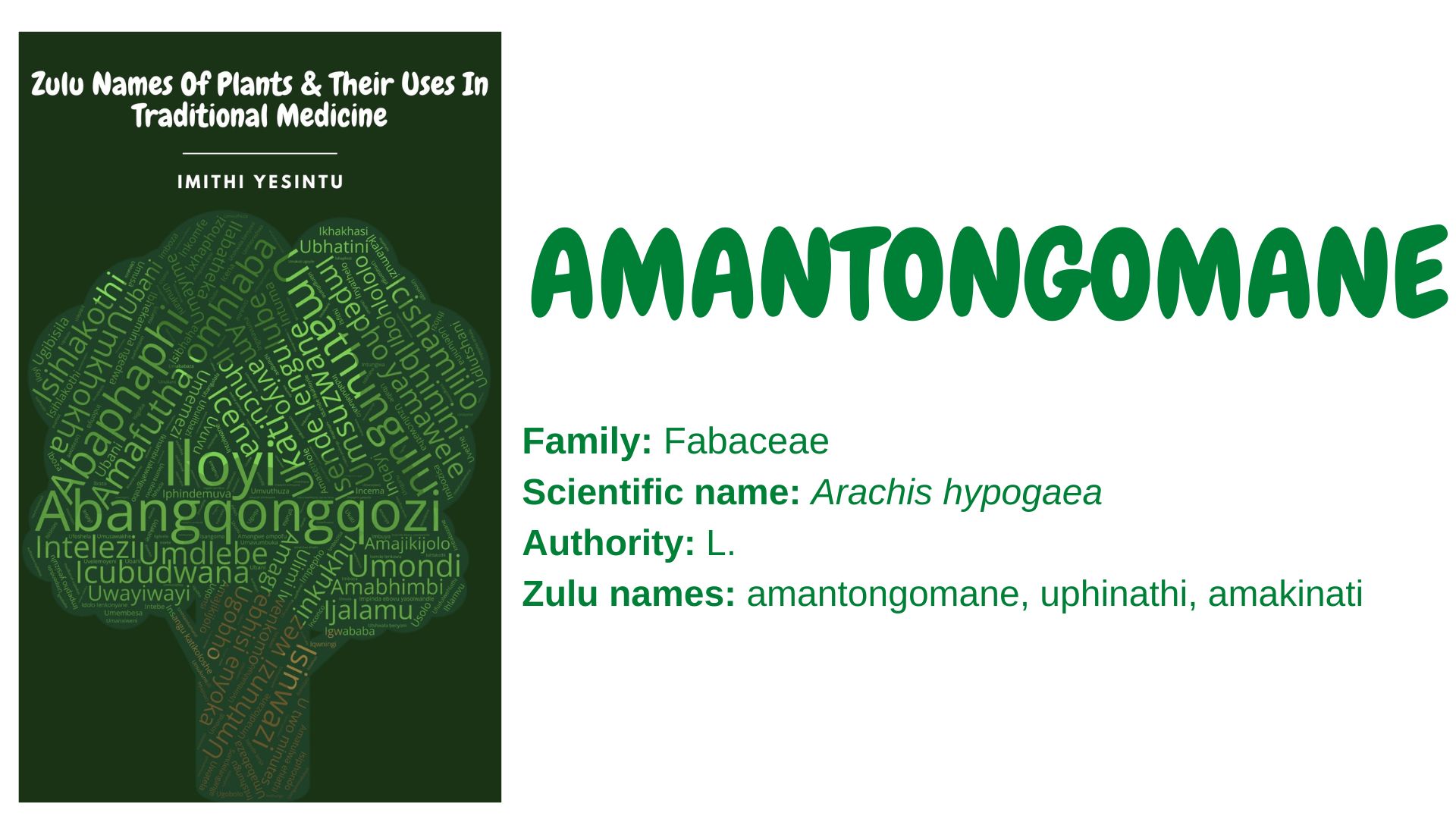Family: Fabaceae
Scientific name: Arachis hypogaea
Authority: L.
Synonyms: Arachis nambyquarae Hoehne, Lathyrus esquirolii H. Lév.
Zulu names: amantongomane, uphinathi, amakinati
Other names: ground nut, peanut (English) aardboontjie, grondboontjie (Afrikaans)
Plant description: A. hypogaea is a perennial herb with alternate and pinnately compound broad leaves, bright yellow flowers, and pods containing two to three edible seeds. A variety of this species are grown worldwide, in the tropical and subtropical regions.
Amantongomane means roasted groundnuts, however, they closely resemble a pea more than a nut.
Uses:
- The seeds are eaten as a snack.
- The seeds are ground to make peanut butter.
- The leaves and shoots are cooked as a leafy green.
- The peanut is used to make peanut oil, for making soap and cosmetics.
- The seeds used to treat hypertension.
- The plant is used as a decoagulant, to prevent the clotting of blood, and to treat blood disorders.
- The plant is taken with milk to treat gonorrhoea.
- The plant is applied topically to treat rheumatism.
- The plant is used as an aphrodisiac.
Safety precaution:
Using traditional medicine responsibly can enhance your overall health and well-being. Misuse and abuse can lead to complications. You can inquire about the correct use of traditional medicine from a knowledgeable herbalist and practitioner. You can also visit imithiyesintu.co.za or email: info@imithiyesintu.co.za to learn more about traditional medicine
References and further reading:
- Duke, J.A., Wain, K.K., 1981. Medicinal plants of the world. Computer index with more than 85 000 entities. 3 vols. Humana Press, Totowa, USA.
- Martin, F.W., Ruberte, R.M., 1975. Edible leaves of the tropics. Antillian College Press, Mayaguez.
- Ntuli, N.R., Zobolo, A.M., Siebert, S.J., Madakadze, R.M., 2012. Traditional vegetables of northern KwaZulu-Natal, South Africa: Has indigenous knowledge expanded the menu? African Journal of Agricultural Research 7, pp.6027–6034.
- Suchoszek-Łukaniuk, K., Jaromin, A., Korycińska, M. and Kozubek, A., 2011. Health benefits of peanut (Arachis hypogaea L.) seeds and peanut oil consumption. In Nuts and seeds in health and disease prevention (pp. 873-880). Academic Press.
- Tacán, M., Tapia, C., Pérez, C., Zambrano, E., Mendoza, A., Monteros-Altamirano, Á. and Sørensen, M., 2021. Cryopreservation of Arachis Hypogaea L. Varieties, from the INIAP-Ecuador Germplasm Bank.
- Settaluri, V. S., Kandala, C. V. K., Puppala, N. and Sundaram, J., 2012. Peanuts and their nutritional aspects-a review. Food Nutr. Sci. 3:pp.1644– 1650.
You Can Order Your Copy Of The Book By Emailing: info@imithiyesintu.co.za
Feel Free To Add Other Uses Of This Plant In The Comment Section Below:
